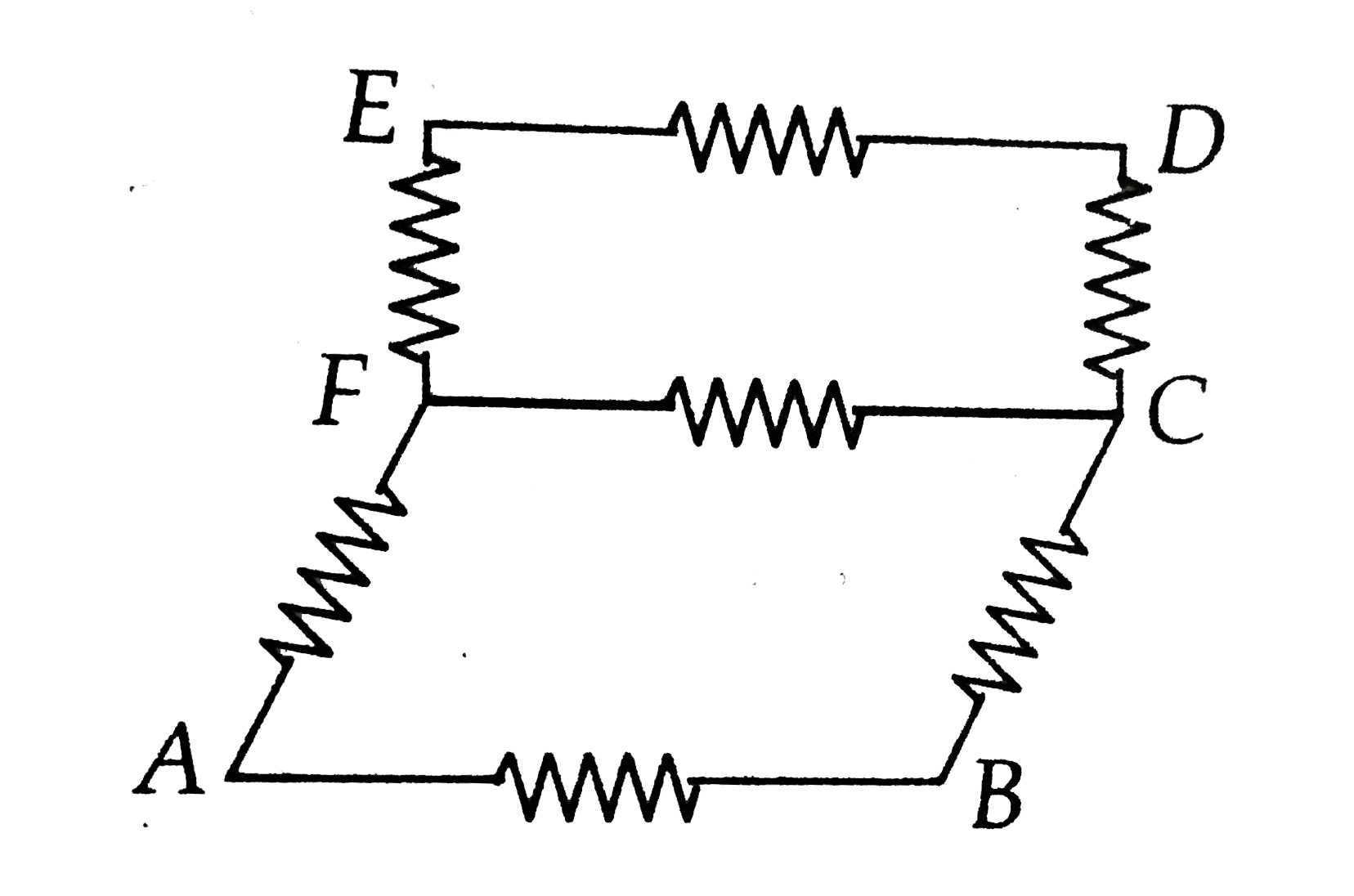Give the difference between e.m.f. and potential difference.
To differentiate between electromotive force (e.m.f.) and potential difference, we can break down the concepts into clear definitions and examples.
1. Definition of e.m.f.:
- Electromotive force (e.m.f.) is defined as the voltage generated by a source, such as a battery, when no current is flowing. It represents the energy supplied per unit charge by the source.
- Example: If a battery has an e.m.f. of 10 volts, it means that it can supply 10 joules of energy for every coulomb of charge that passes through it.
2. Definition of Potential Difference:
- Potential difference (V) is the difference in electric potential between two points in a circuit when current is flowing. It represents the energy used per unit charge as it moves between those two points.
- Example: In a circuit with a total resistance of 2 ohms and a current of 5 amperes, the potential difference across one of the resistors (1 ohm) can be calculated using Ohm's law (V = I × R), which gives us 5 volts.
3. Relationship Between e.m.f. and Potential Difference:
- E.m.f. can be thought of as the cause, while potential difference is the effect. The e.m.f. of a battery drives the current through the circuit, while the potential difference is what is measured across components in the circuit.
- In our example, the e.m.f. of the battery is 10 volts, but the potential difference across one of the resistors is only 5 volts due to the resistance in the circuit.
4. Properties:
- E.m.f. is a property of the battery or power source and remains constant as long as the battery is functioning properly.
- Potential difference varies depending on the components in the circuit and the current flowing through them.
5. Conclusion:
- In summary, e.m.f. is the maximum potential difference provided by a source when no current is flowing, while potential difference is the actual voltage across a component in a circuit when current is flowing.
- Electromotive force (e.m.f.) is defined as the voltage generated by a source, such as a battery, when no current is flowing. It represents the energy supplied per unit charge by the source.
- Example: If a battery has an e.m.f. of 10 volts, it means that it can supply 10 joules of energy for every coulomb of charge that passes through it.
- Potential difference (V) is the difference in electric potential between two points in a circuit when current is flowing. It represents the energy used per unit charge as it moves between those two points.
- Example: In a circuit with a total resistance of 2 ohms and a current of 5 amperes, the potential difference across one of the resistors (1 ohm) can be calculated using Ohm's law (V = I × R), which gives us 5 volts.
- E.m.f. can be thought of as the cause, while potential difference is the effect. The e.m.f. of a battery drives the current through the circuit, while the potential difference is what is measured across components in the circuit.
- In our example, the e.m.f. of the battery is 10 volts, but the potential difference across one of the resistors is only 5 volts due to the resistance in the circuit.
- E.m.f. is a property of the battery or power source and remains constant as long as the battery is functioning properly.
- Potential difference varies depending on the components in the circuit and the current flowing through them.
- In summary, e.m.f. is the maximum potential difference provided by a source when no current is flowing, while potential difference is the actual voltage across a component in a circuit when current is flowing.
Topper's Solved these Questions
- ELECTROCHEMISTRYBOOK - ICSECHAPTER - ELECTROCHEMISTRYEXERCISE - EXERCISE (PART-II Descriptive Questions)(LONG ANSWER QUESTIONS)
33 Videos
- ELECTROCHEMISTRYBOOK - ICSECHAPTER - ELECTROCHEMISTRYEXERCISE - ISC EXAMINATION QUESTIONS (PART-I Objective Questions) (Fill in the blanks)
8 Videos
- ELECTROCHEMISTRYBOOK - ICSECHAPTER - ELECTROCHEMISTRYEXERCISE - EXERCISE (PART-II Descriptive Questions)
74 Videos
- DISTINCTION BETWEEN PAIRS OF COMPOUNDS BOOK - ICSECHAPTER - DISTINCTION BETWEEN PAIRS OF COMPOUNDS EXERCISE - QUESTIONS
155 Videos
- GENERAL PRINCIPLES AND PROCESSES OF ISOLATION OF ELEMENTS BOOK - ICSECHAPTER - GENERAL PRINCIPLES AND PROCESSES OF ISOLATION OF ELEMENTS EXERCISE - EXERCISE (PART-I ( OBJECTIVE QUESTIONS )) (Fill in the blanks)
60 Videos
Similar Questions
Give one difference between starch and gum
View SolutionGive difference between Genotype and Phenotype
View SolutionGive difference between Clone and Offspring
View SolutionGive one difference between systone and diastole.
View SolutionDistinguish between emf and terminal potential difference of a cell.
View SolutionDifference Between Potential Difference And Emf
View SolutionIf the potential difference between A and D is V, what will be potential difference between F and C. each of the resistance is R.

View SolutionThe phase difference between the flux linkage and the induced e.m.f. in a rotating coil in a uniform magnetic field
View SolutionWhat is the relationship between potential difference across the terminalsof a cell and emf of the cell?
View SolutionWhat is the relationship between potential difference across the terminals of a cell and emf of the cell ?
View Solution
